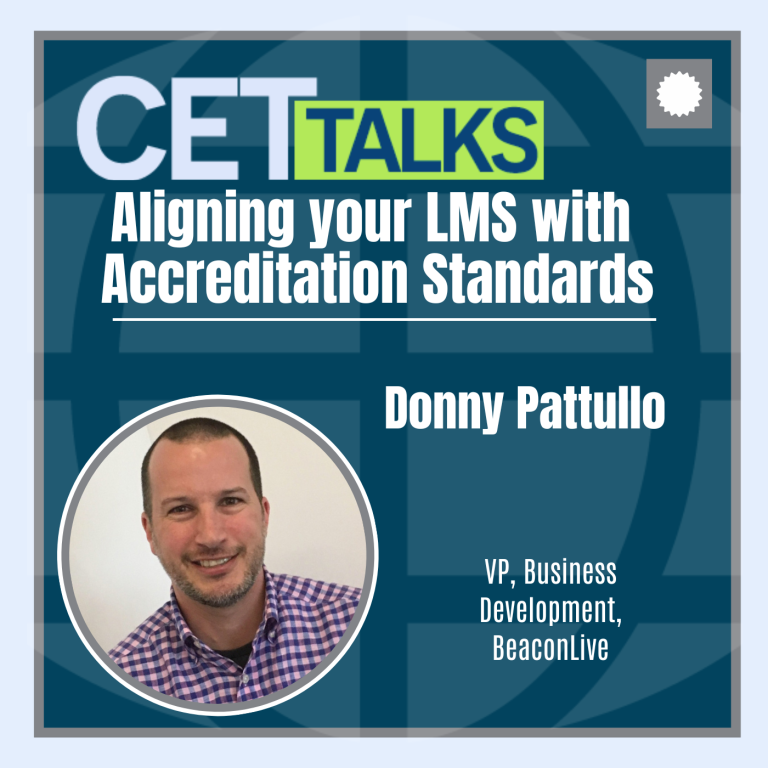Episode 30
- Episodes
- Episode 30: Silos to Synergy
.
CET Talks: Accreditation, Learning and Leadership
Episode 30
FEB 5 2025 . 24 MINUTES
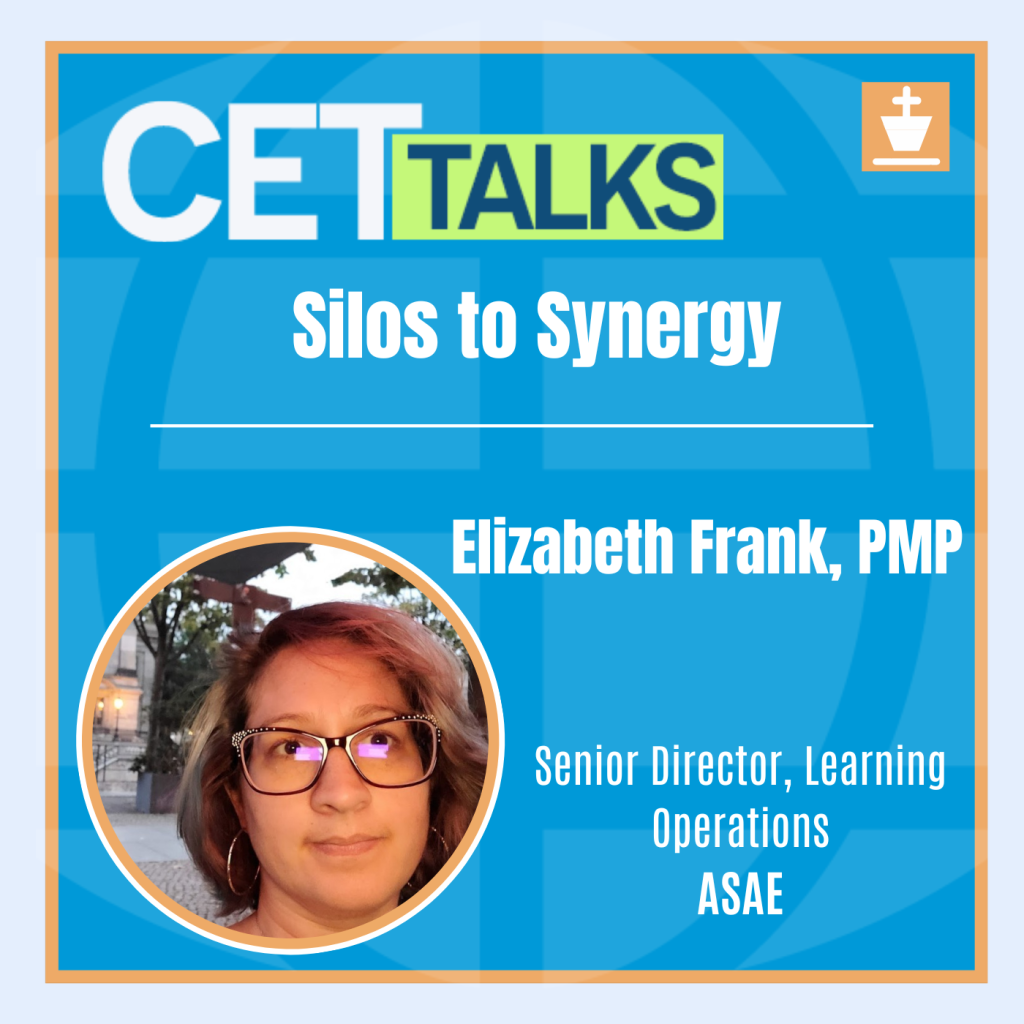
Silos to Synergy: Holistic Approaches to Creating Collaborative Learning
In this episode of CET Talks, Elizabeth “Liz” Frank, Senior Director of Learning Operations at the American Society for Association Executives (ASAE), shares her expertise in driving community engagement and cross-departmental collaboration to develop impactful training programs. With over two decades of project management experience and a PMP certification, Liz dives into the critical role of communication and empowerment across departments, the strategy behind ASAE’s new digital learning platform, and the innovative approaches to content development that guide learners from start to finish.
Listen to the Podcast
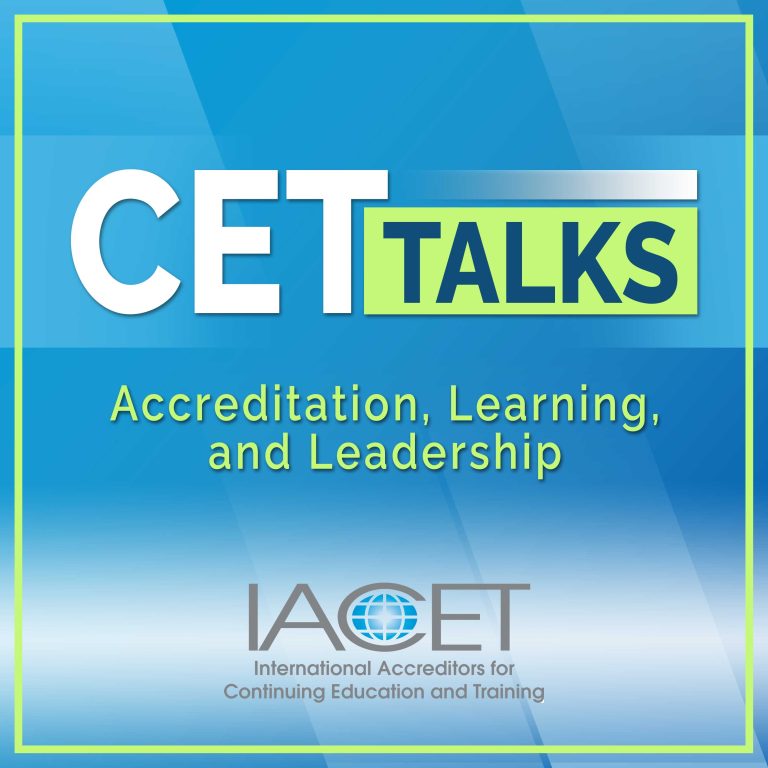
Welcome to CET Talks, the International Accreditors for Continuing Education and Training’s podcast, where we convene thought leaders in the continuing education and training ecosystem to share ideas, research, best practices, and experiences that promote the creation of a world that learns better. Your hosts are Randy Bowman, Interim President and CEO of IACET, and certified corporate wellness specialist Mike Veny.
In this episode of CET Talks, Elizabeth “Liz” Frank, Senior Director of Learning Operations at the American Society for Association Executives (ASAE), shares her expertise in driving community engagement and cross-departmental collaboration to develop impactful training programs. With over two decades of project management experience and a PMP certification, Liz dives into the critical role of communication and empowerment across departments, the strategy behind ASAE’s new digital learning platform, and the innovative approaches to content development that guide learners from start to finish.
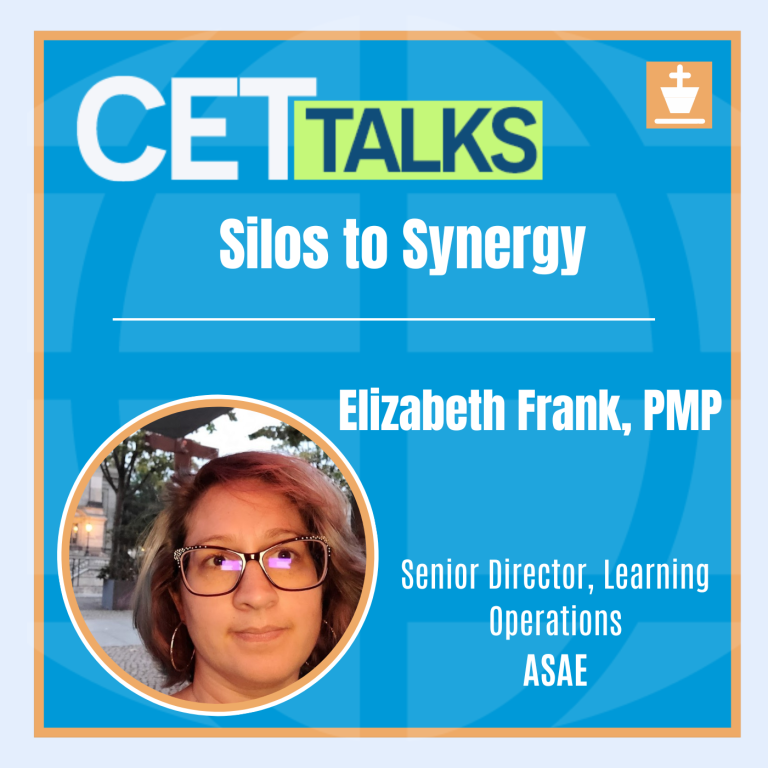
Transcription
Host: Welcome to CET Talks, the International Accreditors for Continue Education and Trainings podcast, where we convene thought leaders in the continue education and training ecosystem to share ideas, research, best practices, and experiences that promote the creation of a world that learns better. Enjoy the episode.
Mike Veny: Hello, and welcome to CET Talks. My name is Mike Veny, CET Talks co-host. I’m a certified corporate wellness specialist and CEO of an IACET-accredited provider. I’m excited to be here with my co-host, Randy Bowman, the president and CEO of IACET. Hi, Randy.
Randy Bowman: Hey Mike. How are you today?
Mike Veny: I’m doing okay. How are you?
Randy Bowman: Pretty good. One of the characteristics that I love most about this podcast is the fact that we, as you say, get to pull back the curtain. We get to be transparent and drop pretenses with each other and with our listeners. In that spirit, I wanted to share with you one of the things that seems to be constantly gnawing away in the back of my head, and that is, how can I ensure that our members are truly getting the value they deserve out of being accredited providers? I do the spiel all the time and talk about the benefits of accreditation and things like enhanced reputation through quality insurance, intentionality, succession planning, business continuity, improved scalability, integration of a culture of continuous improvement into the fabric of an organization. But so many of those don’t necessarily seem to be tangible on a day-to-day basis. So how can I connect and make our members feel value on a day-to-day basis?
Mike Veny: That’s deep. That’s a phone call that we should not be recording, Randy. Well, listen, I’m going to speak to you just for a moment, in the spirit of transparency and for everyone listening as a member. First of all, I’m grateful that our company is accredited by IACET. It’s been a beautiful thing. It has raised our standards, made everything better in our training, and as a member, I see the different educational opportunities that come through. Sometimes I don’t know if this is relevant for my organization or me. So, I have that conversation with myself, too, in my head.
Randy Bowman: Exactly and especially since an organization like IACET, we serve so many different industries. Since our standard is content agnostic, we’re across all kinds of boundaries, and that makes it a little bit more difficult to connect, I think, on a day-to-day basis. The great thing is we have a guest today who is in a similar situation. They serve a multitude of industries. I want to introduce today Liz Frank. She is the Senior Director of Learning Operations at the American Society for Association Executives, also known as ASAE. She has over 20 years’ experience as a project manager and has earned her PMP certification from the Project Management Institute. What I love is she focuses on developing and implementing new learning strategies, and she recently launched a brand new digital platform for ASAE designed to provide a holistic learning experience and value to their members. I’m hoping to get some ideas from her today. Liz, thanks for joining us.
Elizabeth Frank: Thanks for having me, Randy and Mike.
Mike Veny: Yes. Let’s get started with you and the importance of listening to the people that you serve. Your experiences highlight the importance of subject matter engagement in developing training programs. This may seem silly to ask, but why do you believe it’s important to engage your community when developing training programs?
Elizabeth Frank: Well, honestly, Mike, the simple answer to that is my community is the backbone of everything I do. I mean, they know what they need. If I’m not listening to them, if I’m not engaging them in content assessments as my subject matter experts, then am I really providing them the services they need? I mean, you mentioned earlier, ASAE provides services to a very broad audience of professionals. I can’t exactly do training that is specific to scientific audiences, medical audiences, and IACET members like training audiences. But what I can do is I can engage the ASAE community as a whole and really understand what those topics are that can enable them to better serve their memberships. Engaging them has really improved the quality of our programming and taught me a lot about topics that I wasn’t as educated about myself, that then helped me to improve the programming that I’m providing to them.
Mike Veny: Does engaging your community always work? Have there been times where you’ve done your due diligence, but it still wasn’t the right program?
Elizabeth Frank: Yeah, it does not always work. It works a lot of the time and sometimes it’s kind of a hit or miss process. We have worked really hard over the last couple of years to put into place some really great engagement practices with the community on getting solid content in order to improve the training that is available to membership. But sometimes that doesn’t come out. The nice thing about that is I’ve put into place a lot of assessments on that content. I’m sure a lot of you’re familiar with post-event surveys where you have your conference, you have your post-event survey, and then most of the time the people who give you the feedback on those surveys are the people who are really, really happy or really, really unhappy with your event. I get the same out of this engagement process with our members and with our learners.
I’m not hearing a lot of the middle voices who hopefully are happy with what I’m doing, but I hear a lot of that strong, constructive criticism, and I hear a lot of the positive feedback. The nice thing about that is I can then take that and really improve the training. We work with our communities internally to develop training content that we think is going to be appropriate for them, but sometimes we miss the mark, and that’s okay, because when we miss the mark, that just teaches us what not to do again. It teaches us new ways to be able to reach out to the community, to reach out to our audiences and gather the right subject matter experts, the right training content topics, et cetera, that we need to be implementing. I think that over the last two years, we have learned a lot as ASAE learning on how to do that.
We’ve created entirely new training pipelines, everything from using rejected proposals from conferences to having submission forms on our websites to volunteering with all of our committees and councils. That has improved our processes and improved the content that we’re getting and the evaluations that we’re getting. I think that it doesn’t always work, but just trying, having a pipeline of potential content contributors means that the end result is a steady stream of training that will end up in our learners’ hands. Hopefully, as you go on, as you improve your processes, it stabilizes and is just great content continuing on and on.
Mike Veny: Well, let me ask you for our listeners out there who are providers, who are trying to get accredited by IACET right now. How does performing a learning needs analysis, and you kind of answered this before, but just wanted to get really more specific to that. How does a learning needs analysis fit into your process of engagement? Is it a set system that you have that you’re constantly revising? What have you learned about performing the learning needs analysis?
Elizabeth Frank: For me, it is a system that constantly is being revised because the topic areas that my audience need is not going to be the same year after year. And I imagine that’s the same for most people, honestly. So what ASAE did for our learning needs analysis, and this is still an ongoing process, is we started with a content survey that we sent out to membership almost two years ago at this point. And that content survey came back with all of this—and it went over everything. It went over in-person, digital publishing, articles, every piece of content ASAE could put out. And we went through that and the results of what are we doing? What are we doing wrong, what do our members want? And then we dove deep into our content, what do we have that matches that? And this took forever, to be honest.
Our Director of Content and Publishing, Jenny Nelson, led this process for us. She is amazing. It takes a long time to do a really deep analysis into the learning that you’re going to provide, especially if in my case, you’re kind of starting from scratch. We didn’t have a lot of association specific content when I started with ASAE. I was starting from scratch, and I have nothing to offer my learners. Where do I start? Diving into what you already have, what does it match in terms of what your members need, and then figuring out where you can move from there is really a great way to start. hen from there, dive into that process of engagement, engaging your community, getting that direct feedback, working with them to provide subject matter experts and content. It’s a really important process, and it is, in a nutshell, the way that we drove our brand new content strategy that we’ve just rolled out that ASAE as a whole is following instead of just kind of being siloed departmentally.
Randy Bowman: I was actually going to ask about that. Working with subject matter experts is one thing, but I heard you say you guys were working with all these different committees. You went through all the different ways you deliver content, whether it was in-person training, events, delivered digitally publications, and I’m like, those are all separate departments. I mean, that’s how organizations work. Those are all separate departments. Silos exist in all organizations, whether they’re profit, nonprofit, or governments. So how did you cross those bridges, break down some of those silos, to get cross departmental empowerment to communicate the impact of the ability to develop these kind of training programs?
Elizabeth Frank: I had a mini meltdown, honestly, when I first started. I was brought on board as the Director of Learning Experiences, and I was brought on board to do digital programming. A little while into my being there, probably three to six months, I had this meltdown because I was finding out about all these webinars and programs being run by completely different departments that I had no idea that were happening. I was like, how do I of all people not know that all this digital learning is coming out from my organization when I’m the one who’s in charge of digital learning? So, after my meltdown, I started small. I picked two people that I thought were probably going to be my best allies in starting that cross departmental communication and breaking those silos down. One I mentioned before, who’s Jenny Nelson?
She’s our Director of Content Publishing. The other one is Andrea Weeders. She’s from our ASAE Research Foundation and if you don’t know a lot about ASAE, that’s actually an entirely separate entity. But again, no communication between how the different groups are putting out content or putting products together or the research that’s being done. So the three of us just started having regular calls every couple of weeks; what are you doing, what’s coming down the pipeline, where could our programs fit together? We quickly realized how much content we were each producing that overlapped in terms of topics and could complement each other’s products. Once we got that initial base started, we set up routine ways to collaborate, evolve our programs together. That evolved into partnerships that improved offerings. So now Learning and the Foundation runs a program together called the Foresight Application Course. Pubs and the Research Foundation and Learning developed ASAE CAE prep course.
We’re the CAE Association. We’re the one that gives out that credential, but we had never had a CAE prep course before, which is kind of outrageous. So starting small and working with just the three of us, we were able to start building those steps. Then from there, the idea kind of exploded across the organization. Jenny spearheaded it, and we collected a group of leadership to examine the departmental offerings across ASAE, put core content standards in place. From there, we developed a core content team where we have representatives from every department at ASAE, and we now meet quarterly. We’re trying not to overwhelm people with too many meetings but having that quarterly meeting where one representative or two representatives from each department that develop content really talk about what they’re doing, what’s coming out, making notes of who we should be collaborating with; that has revolutionized the way in which we’re offering up our programs. One of the biggest ways that’s happened is with our new learning management system, which we’ll be talking about, I guess a little bit later in the program.
Mike Veny: Yes. Well, speaking of ASAE has a lot of different systems, but there’s been a lot of change over the last year with new launches and technical infrastructure overhauls. Can you talk about your decision to build the organization’s new digital learning strategy and how your technological infrastructure fits into it?
Elizabeth Frank: Absolutely. So I’m going to start a little backwards with the technological infrastructure, because that was my excuse to overhaul our digital learning strategy. ASAE is in a massive system of change Right now. We are overhauling everything. Our event management system, our AMS, our customer system, our website, our transcript system, everything technologically is getting an overhaul this summer and fall. And so when I first came on board and I sat down and started talking to the database team about it, we realized that one, the old LMS wasn’t working for us. And two, and this is really the truth, I kind of shoehorned getting a new learning management system into the technological overhaul because it made sense that if we’re going to be building out all these platforms that are going to be talking to each other and fully integrated with each other, then a new learning management system needed to be part of that process.
So our amazing database team led by Debbie Hanger very patiently put up with me and my insane amount of requests in getting a new learning management system. But with regard to the digital learning strategy, we had none. It didn’t exist. We had some online seminar series, occasional webinars, occasional virtual training programs, but most of the content that we offered up initially was just general skills training that we sourced from an outside content vendor. We didn’t have any association specific content. That’s what we needed to be providing to our members. So we developed a multi-phase approach in putting that together, getting that out there. Phase one was basically building up a ASAE developed training content. We built up over 20 courses anywhere from three hours to seven hours in length. Phase two was developing those processes, policies, pipelines to source content. And then phase three was the development and launch of this new learning management platform, ASAE Academy. And that is where we are unifying every department within ASAE. And so that is how it ties into the technological overhaul. Every department in the organization, not just Learning, is going to be using the platform for their content and providing it out to the membership instead of it just being siloed within the Learning Department itself.
Randy Bowman: One thing that comes very clear is that you at ASAE are pumping out a lot of content and it is so interconnected. How did you go about identifying and creating this training pipeline that you mentioned that intends to guide learners from start to finish. What tips would you give our listeners if they wanted to recreate some of this stuff that you’re doing?
Elizabeth Frank: A lot of it goes back to those content assessments and surveys we did. We took a hard look at what was missing, listened to the community about what they wanted. Last year I was doing a presentation to the Board, and I pointed out to them 60% of the content ASAE produces is focused on CEOs. And yeah, they’re our largest membership, but we have a lot of other large audiences out there that we didn’t have content for, and they wanted training pipelines. The young and emerging association professionals, the professional development, the learners community, they all wanted content specifically to their areas of expertise. They shared with me what they needed to see within those training pipelines to advance their careers. We are working really closely with them specifically to source content, build content, build those training pipelines. My biggest piece of advice is just listen to your communities.
Ask them to flesh out exactly what they want to see, because that does take a lot of burden off of you as the training developer, to guess what they need. It also encourages them to participate in developing content or review content or even help improve content that already exists. It all goes back to engage with your communities and getting them involved. For instance, I’m a liaison to a lot of our ASAE communities, and last year, the ethics committee came to me and said, there is not enough content on ethics on the site. We want to develop a six piece ethics course based on the ASAE code of ethics. I was like, go for it. They literally came back to me three months later and handed me a full package of training that I just had to build out an Articulate storyline. If you engage your communities like this a lot of the times, that will empower them to help you develop content that is great for what they are asking for and what they need.
Mike Veny: Now for the most important question. What does a world that learns better look like to you?
Elizabeth Frank: My answer is going to be really short. It’s just improved representation and elevated voices.
Randy Bowman: Liz, thank you so much for being here and delivering this engaging and informative presentation for us today. So Mike, what is the one thing that you’re taking away from our discussion with Liz today?
Mike Veny: Hope for my organization? No, I realized that one of the themes that was coming in from every response Liz had was the importance of taking a detailed inventory of everything. Really going through stuff and looking at it from all angles. It’s hard, it’s ugly, it’s messy, but it’s so important to do. That’s really what I got from it, and that’s a personal and professional thing right there.
Randy Bowman: Yeah. So the one thing I heard over and over again, even though I don’t think she ever used the word “relationship”, but it was all about relationships, connecting with her peers that are over other silos, and then having those relationships be the grounding place for exploding into other silos, relationships with each and every one of her committees, acting as that liaison and that it’s that connection that in the end moves an organization forward.
Mike Veny: I love that. Well, as we wrap up today’s discussion on creating content life cycles and pipelines, we’d love to hear from you. How are you threading together your various offerings into a content pipeline? Are you guiding your learners through their journey or letting them pick and choose as they see fit? Your stories can provide invaluable lessons and inspiration for others navigating similar paths. And don’t forget, you can submit topic ideas, suggestions for guests, review our archives, and engage with our community at the CET Talks website, available at cet-talks.com. We certainly hope you’ll subscribe to this podcast on your favorite podcast platform so you don’t miss any episodes. Thank you so much for joining us today.
Host: You’ve been listening to CET Talks, the official podcast of IACET. Don’t forget to subscribe to the podcast on Spotify, Apple podcasts, or wherever you listen to podcasts. To learn more about IACET, visit iacet.org. That’s I-A-C-E-T.org. Thanks for listening, and we’ll be back soon with a new episode.
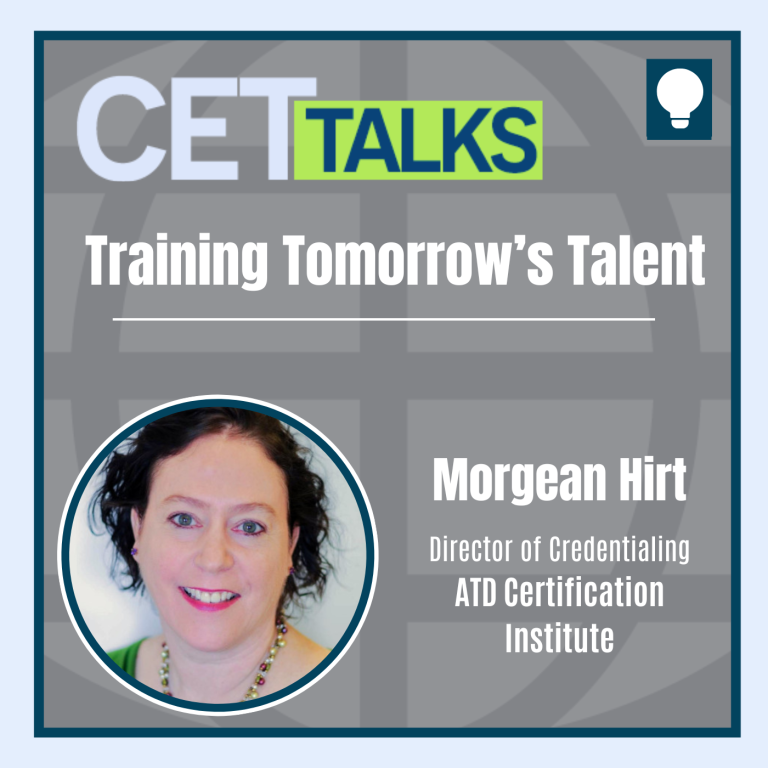
Episode 31: Training Tomorrow’s Talent: Exploring Certification, Standards, and Impact with ATD’s Certification Institute
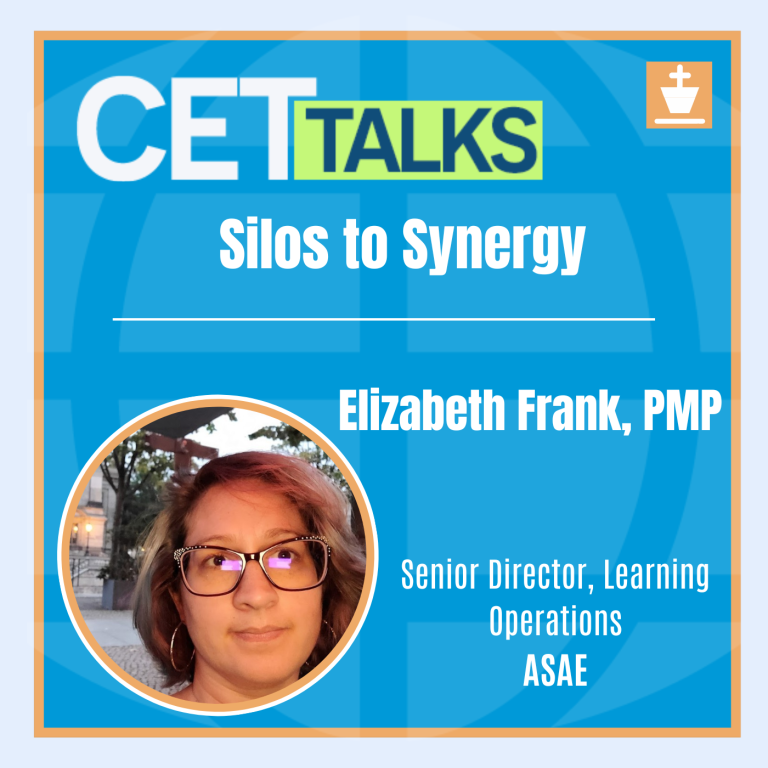
Episode 30: Silos to Synergy: Holistic Approaches to Creating Collaborative Learning

Episode 29: Credentials in Crisis: Challenges and Opportunities in Modern Education Recognition
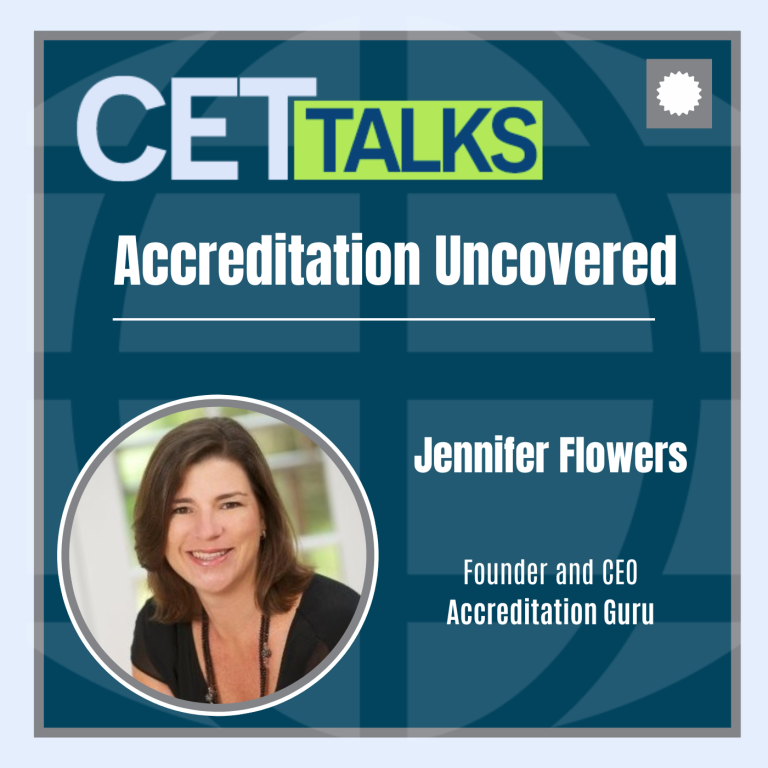
Episode 28: Accreditation Uncovered: Essential Insights from an Industry Leader
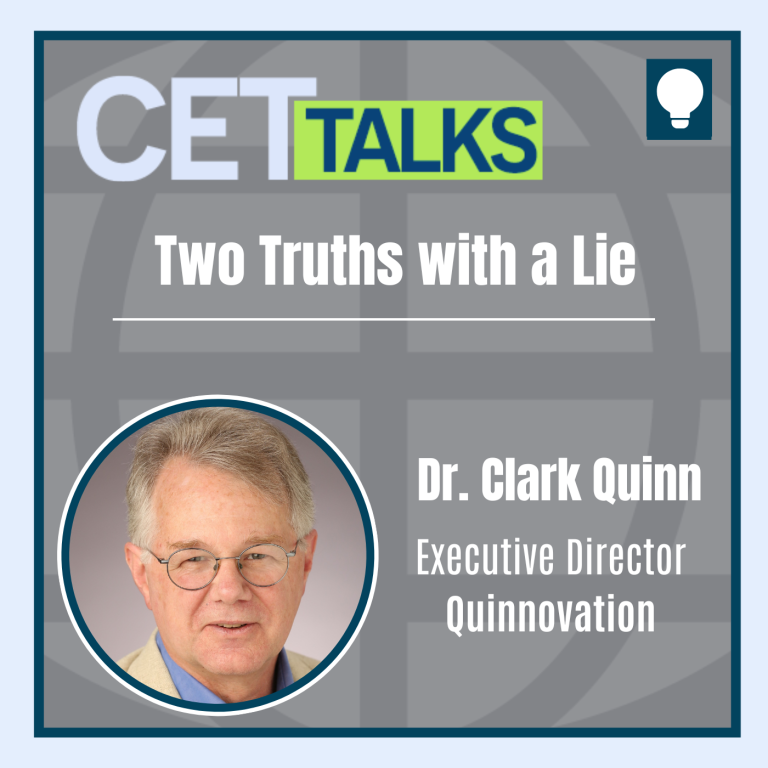
Episode 27: Two Truths with a Lie: Managing the Myths of Modern-Day Learning
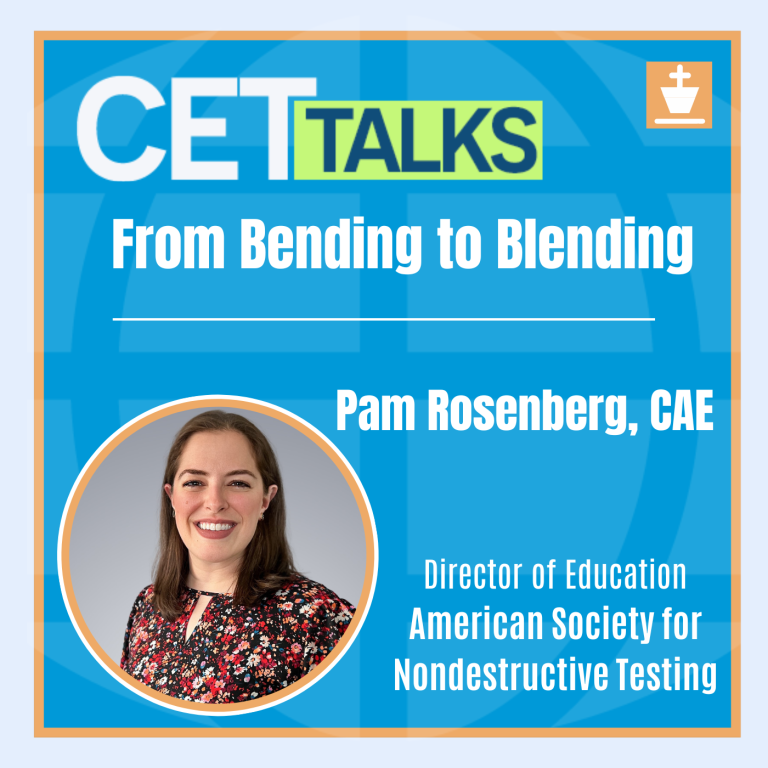
Episode 26: From Bending to Blending: Best Practices in Integrating Externally-Created Content
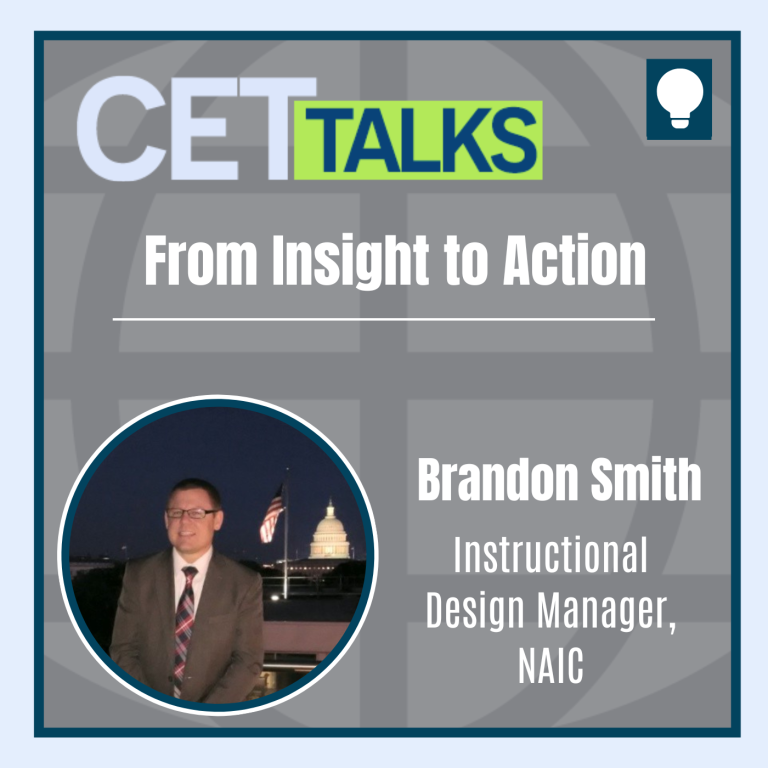
Episode 25: From Insight to Action: Charting the Career Path of a SME-turned-ISD
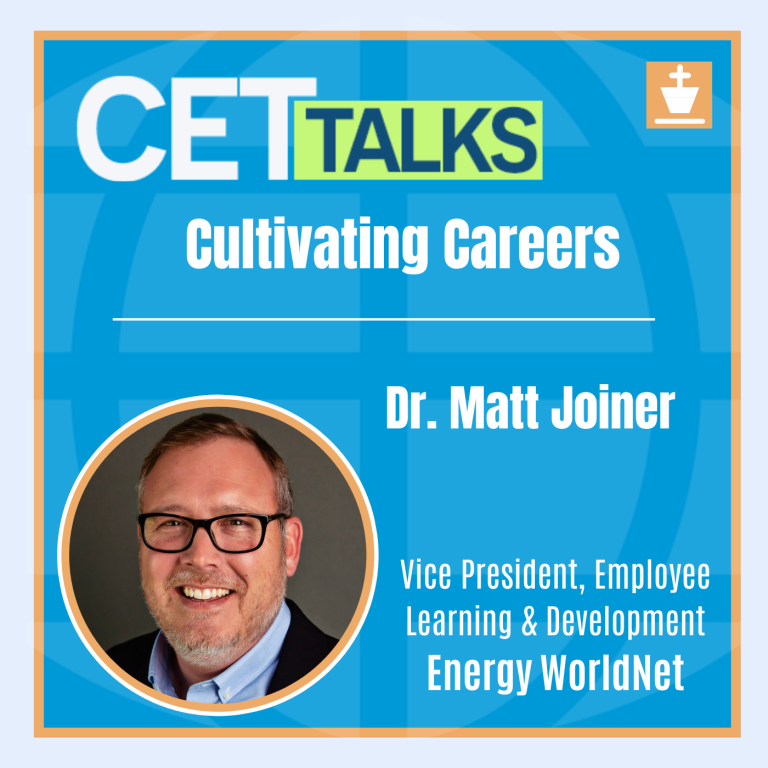
Episode 24: Cultivating Careers: The Power of Employee Engagement for Organizational Success
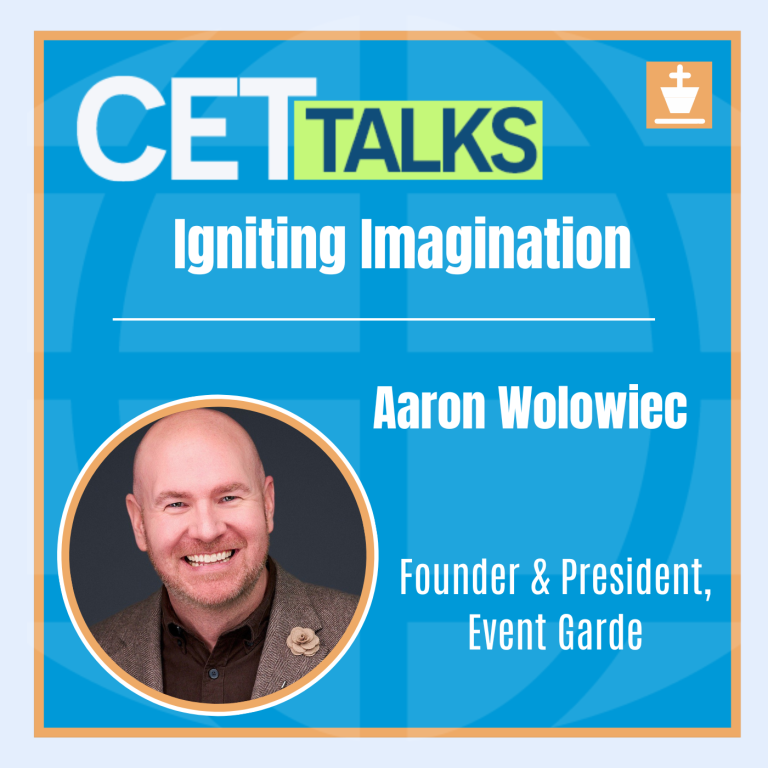
Episode 23: Igniting Imagination: Crafting Creativity in Training Environments
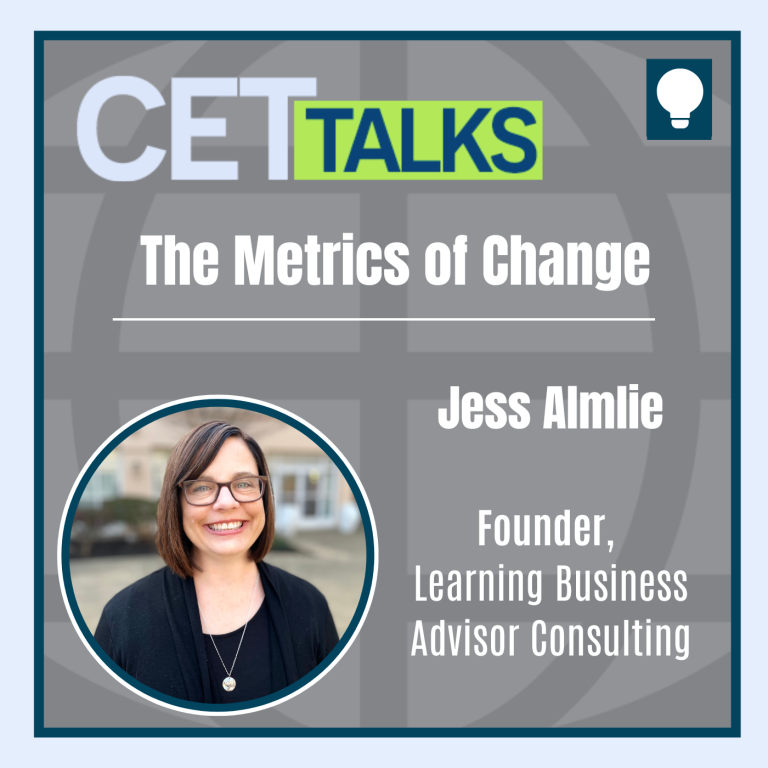
Episode 22: The Metrics of Change: Navigating Purposeful Measurement in L&D
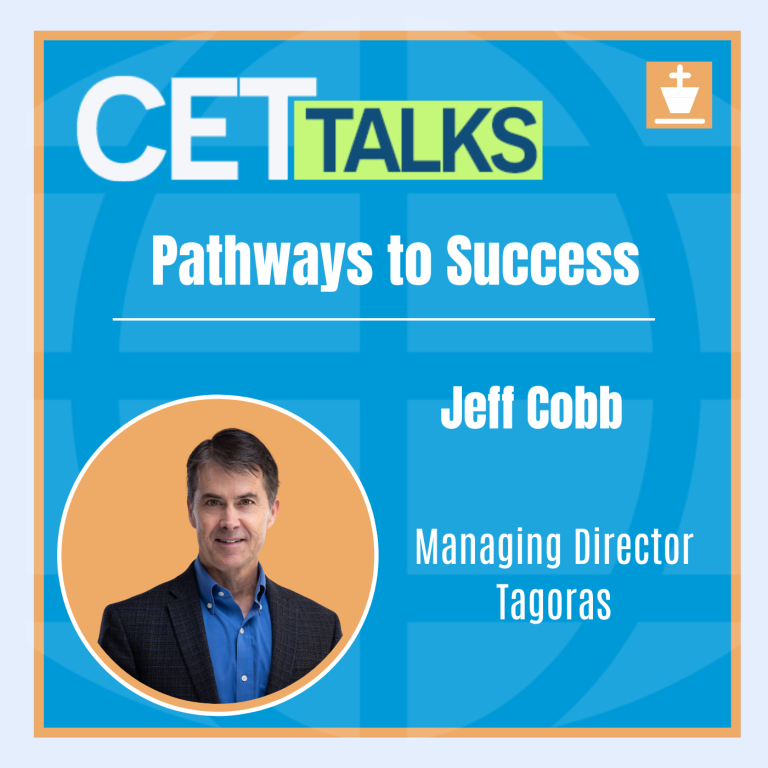
Episode 21: Pathways to Success: The Value of Lifelong Learning through Digital Credentials
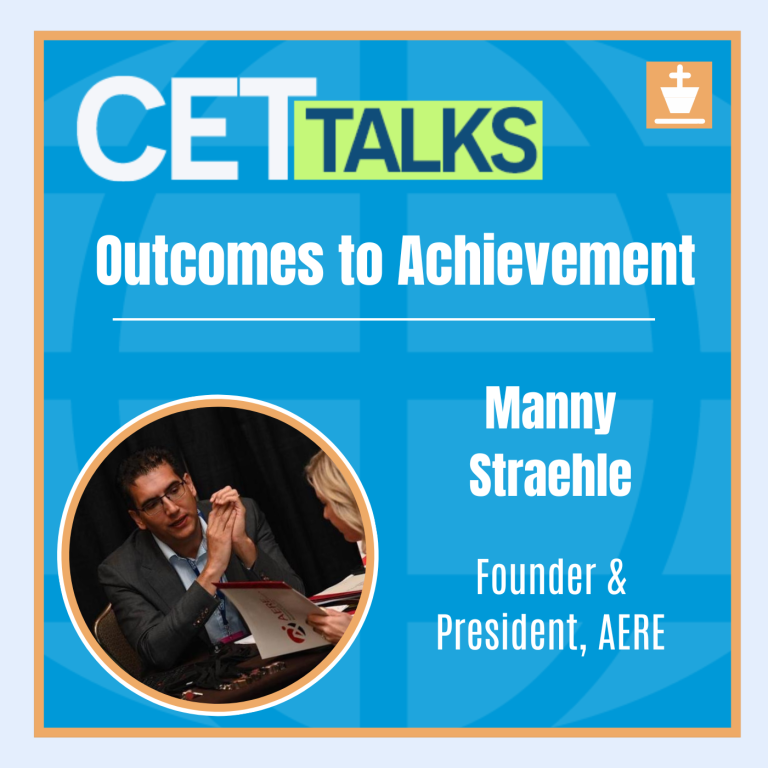
Episode 20: Outcomes to Achievement: Crafting Tomorrow’s Workforce Through Competency Models
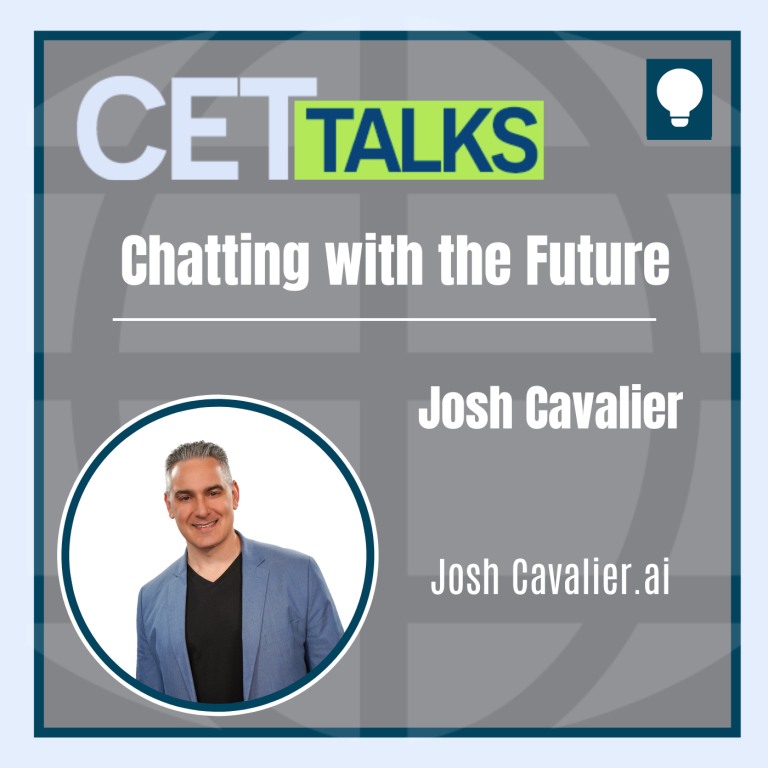
Episode 19: Chatting with the Future: Enhancing AI Output Through Prompt Engineering
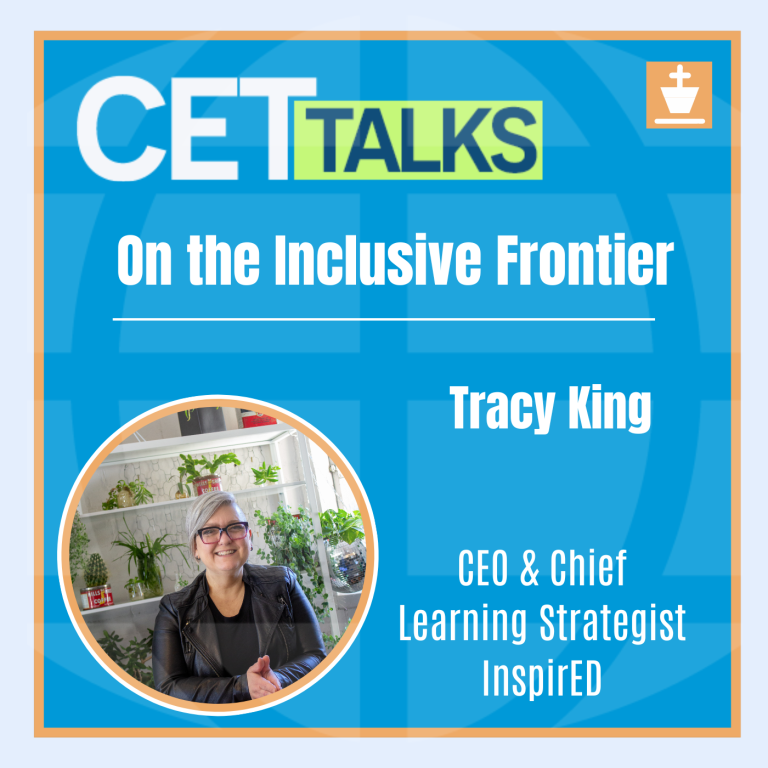
Episode 18: On the Inclusive Frontier: Harnessing Neurodivergence in Modern Training

Episode 17: Designing with Purpose: Strategies for Accessible e-Learning Development
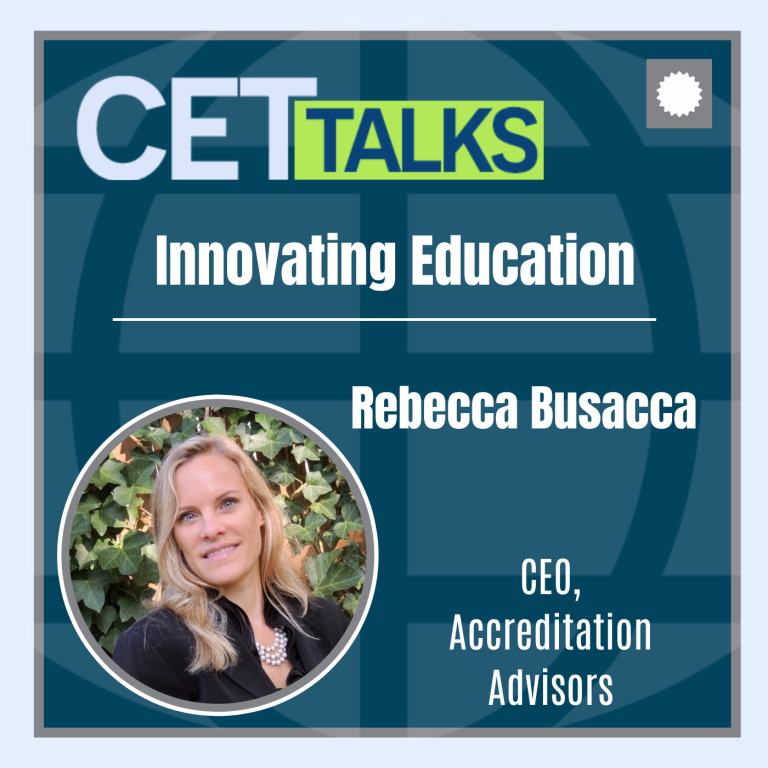
Episode 16: Innovating Education: Navigating Accreditation for Short-Term Training
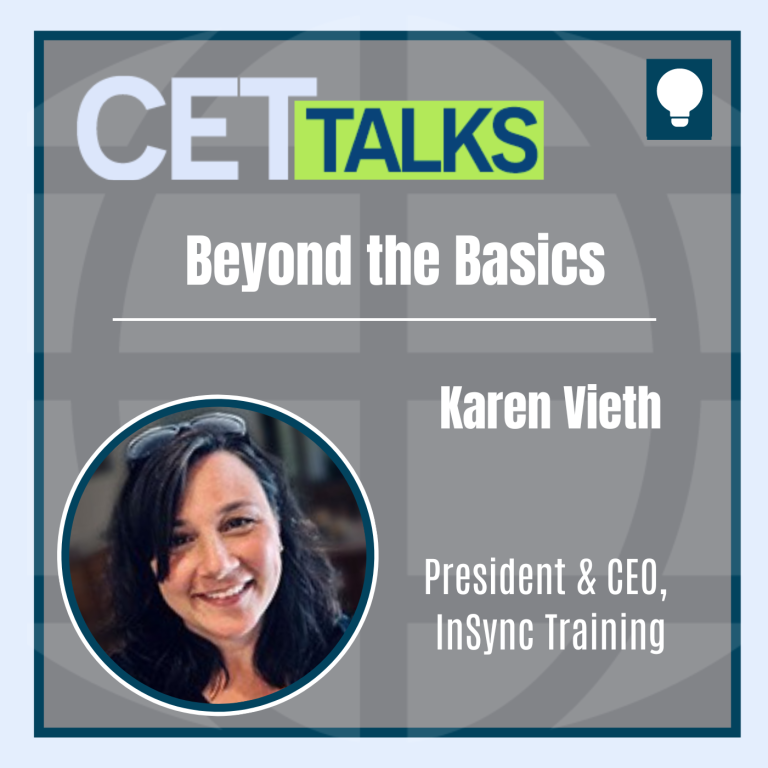
Episode 15: Beyond the Basics: Elevating Virtual Training through Expert Facilitation
